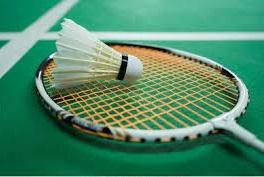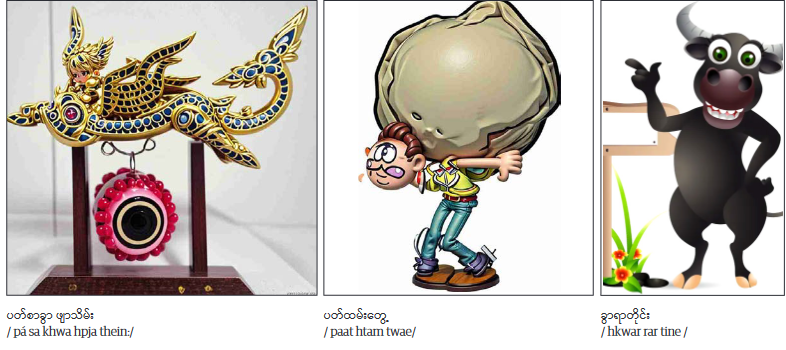The Impact of Systematic Training
Posted_Date
Image

Body
IN life, there are often things we believe we are quite skilled at or have mastered, but in reality, our perceptions and judgments can be mistaken. In this context, the Myanmar saying “the teacher doesn’t teach improperly, the student doesn’t learn properly” carries significant meaning, and we should be mindful of it. There is a vast difference in outcomes between those who follow the methods and systems taught by their teachers and those who work without proper guidance or in a haphazard manner. Here, I will share some personal experiences to illustrate just how important it is to learn and develop skills under the guidance of a good teacher and through proper methods.
This happened during my high school years in 10th grade, 1970. After failing the matriculation examination once, I had to return to school for another year in the same grade. Since it was a class full of repeat students, there wasn’t much discipline.
There were about forty students in the class, and during the times when the teacher wasn’t around, the boys would gather at the back of the classroom and chat. I was among them, too.
One day, four students from our class went missing. After investigating, we found out it was Tun Kyi, Tin Aung, Soe Naing, and Myat Tun. In reality, they hadn’t disappeared at all. They were representing our school as the selected athletes for the Badminton competition at the Pathein District Schools Sports Meet. That’s why they weren’t in class; they had gone to Pathein for the competition.
About three weeks later, Tun Kyi, Tin Aung, and Soe Naing returned, but Myat Tun didn’t come back. I asked Soe Naing, and he told me that Myat Tun had been selected as a district-level athlete and was continuing his training in Pathein. He said that if Myat Tun were selected as a permanent Badminton selection for the upcoming Ayeyawady Region Badminton Competition, he would compete, and if not, he would return. Myat Tun ended up missing school for about two months.
Eventually, he came back after being selected as a representative for Pathein District. He returned only after the competitions were over.
One day, during a time when the teacher couldn’t come to class as usual, the students gathered at the back of the room and started chatting. The conversation covered all sorts of topics, and Myat Tun, in his bold manner, began sharing his fresh experiences as a district-level badminton competitor. I was just sitting there, half-listening to his stories. My friends were listening too, but I had a feeling that, like me, they were secretly feeling a bit envious.
As Myat Tun kept boasting, he suddenly challenged us.
He said that anyone brave enough to play badminton against him could do so, and he would give us a 14-point advantage in a 15-point game. He even suggested that we place a wager on the match!
The wager was set at five kyats.
For those reading this today, it’s worth considering how much five kyats meant around the 1970s compared to today’s value. Back then, five kyats held significant value, and its worth in today’s terms would certainly be much higher.
So, dear readers, you can imagine how much that amount could buy at the time.
All of my friends fell silent, deep in thought. As for me, I began to realize that with a 14-point lead, I only needed to score one point to win. No matter how skilled Myat Tun was, even as a district-level athlete, I was confident I could manage at least that one point.
The thought, “I can win this!” filled my mind, and I boldly accepted his challenge, saying, “I’ll play!” Myat Tun, with a smile, said, “Alright, great! Tomorrow morning at 8 am, let’s meet at the court. Just the two of us. I’ll come pick you up from your house.” He set the match.
At that time, our town had an indoor court where youth and middle-aged badminton enthusiasts would gather. It was located at the back of the cinema, and they had converted it into a proper indoor badminton court. The club was known as the “Myoma Badminton Club.”
On the morning of the match, Myat Tun came to pick me up from my house. His appearance was striking — his skin was fair, and he was dressed entirely in white. He wore a white t-shirt, white shorts, white ankle socks, and white canvas shoes, and he even carried a brand-new white shuttlecock in his hand. On the other hand, he held a brand new Yonex racket.
He looked just like a young prince, and that image of him is still vivid in my mind to this day. Let me describe my situation a little as well. I wasn’t someone who knew how to play badminton properly; I just thought I could manage to score that one point.
Unlike Myat Tun, I didn’t have any fancy outfits. I simply wore an old sleeveless vest and a traditional longyi tied up at the waist. Since I didn’t have my own racket, I stopped by Tin Aung’s house on the way to the court and borrowed one from him.
When we arrived at the court, Myat Tun unlocked the door and turned on the lights. On each side of the court were three four-foot fluorescent lights, brightly illuminating the space.
Under the glow of the lights, Myat Tun, dressed all in white, looked every bit like a young prince. On the opposite side, there I stood, barefoot, in my old sleeveless vest and longyi, ready for the match.
You can imagine the contrast, dear readers!
Before the match started, Myat Tun made a request. He reminded me, “Since I’m giving you a 14-point lead, I’ll start with the serve.” I agreed without much thought. And so, the match began.
As soon as it started, Myat Tun scored one point after another, almost effortlessly. It felt like I was being chased around the court like a dog while he, without breaking a sweat, calmly accumulated points.
Meanwhile, I was running from the front to the back of the court, entirely out of breath, while he didn’t even seem to perspire.
By the time he reached 10 points, I was still at zero, and I was already exhausted. Myat Tun, however, appeared as composed as ever. I started wondering if scoring even a single point was going to be possible. Was he really this good? And could I even manage to win one point in this game?
Before long, the score reached 14-14. Up until this point, I hadn’t even returned a serve that landed on Myat Tun’s side of the court. In other words, I hadn’t managed to hit the shuttlecock onto his side to make it fall on the ground. At 14-all, it was clear that whoever continuously scored the following two points would win. Whether he scored two consecutive points or I somehow managed to do so, the victor would be decided in the next few moments.
By now, dear readers, you might already have an idea who was going to win. Yes, I lost. In a 15-point match, I couldn’t even score a single point. After the game was over, Myat Tun walked over to my side of the court, patted me on the shoulder, and smiled like a true victor. I, on the other hand, reluctantly pulled out the five kyat notes I had tucked in my waistband and handed it to him.
That night, I struggled to sleep well, replaying the events of the day in my mind. Myat Tun and I were the same age, physically similar in appearance, and even shared the same classroom. Yet, in this 15-point badminton match, I couldn’t even manage to score a single point against him. I found myself pondering the reasons behind my defeat.
We were both in the same situation: same age, similar bodies, and equal academic standings, as we were both in the tenth grade. So why was it that I failed to score even one point? I continued to question myself, trying to find answers to my thoughts. However, as the night deepened, I still hadn’t reached any conclusions.
The day’s events were etched in my heart, a reminder of the competition and the need to improve.
After a few months, I finally found the answer I had been seeking, and it came from Myat Tun himself.
Here’s how it went: during that summer break, Myat Tun’s family moved to another city. However, his father stayed behind in our town due to work responsibilities. Unfortunately, Myat Tun’s father got married again to a lady in his office, and now he was living with his new wife. Being the eldest in his family, Myat Tun would return to our town about every two months to visit his father for various family affairs. During these visits, he often stayed at my house for about three or four days.
One time, he asked me, “Aren’t you going to learn how to play badminton?” He mentioned that he could teach me. I listened intently as he spoke. He had been away from our class for about two months, participating in a selection process in Pathein District, where he had been training. One day, the Pathein District team travelled to Yangon for further training, coinciding with a time when the Aung San Stadium in Yangon was hosting a workshop with the Chinese Selection Team for national badminton selectors from Myanmar. During that training, they were fortunate enough to receive instruction in badminton techniques and Chinese methods from the national and Chinese coaches. At that moment, China was at the top of the badminton atmosphere across the world.
I have now clearly understood the answer. I have learned the lesson that there is a significant difference between someone who has been properly taught and trained by a good teacher in a systematic way and someone who knows nothing at all, like a complete novice. No matter how similar in age, appearance, or educational qualifications, I have realized that I can never match someone like Myat Tun, who good teachers have taught in a disciplined manner. That’s the answer I’ve come to understand.
Source- The Global New Light of Myanmar



